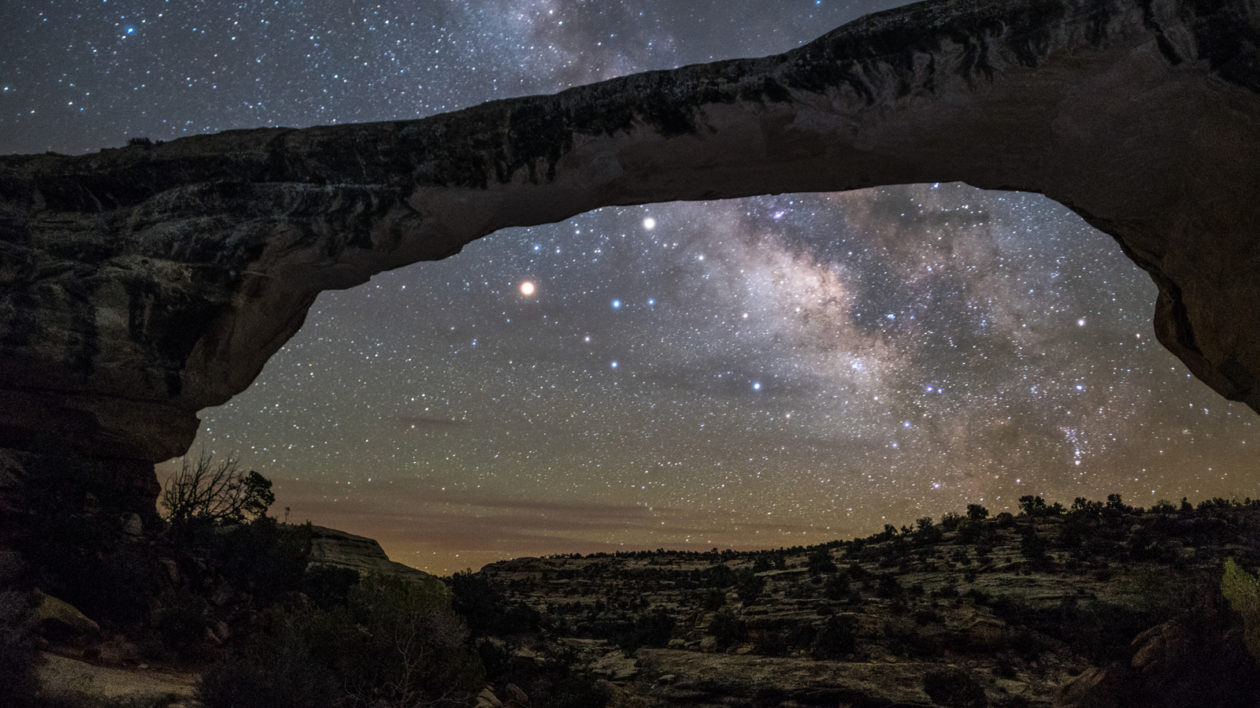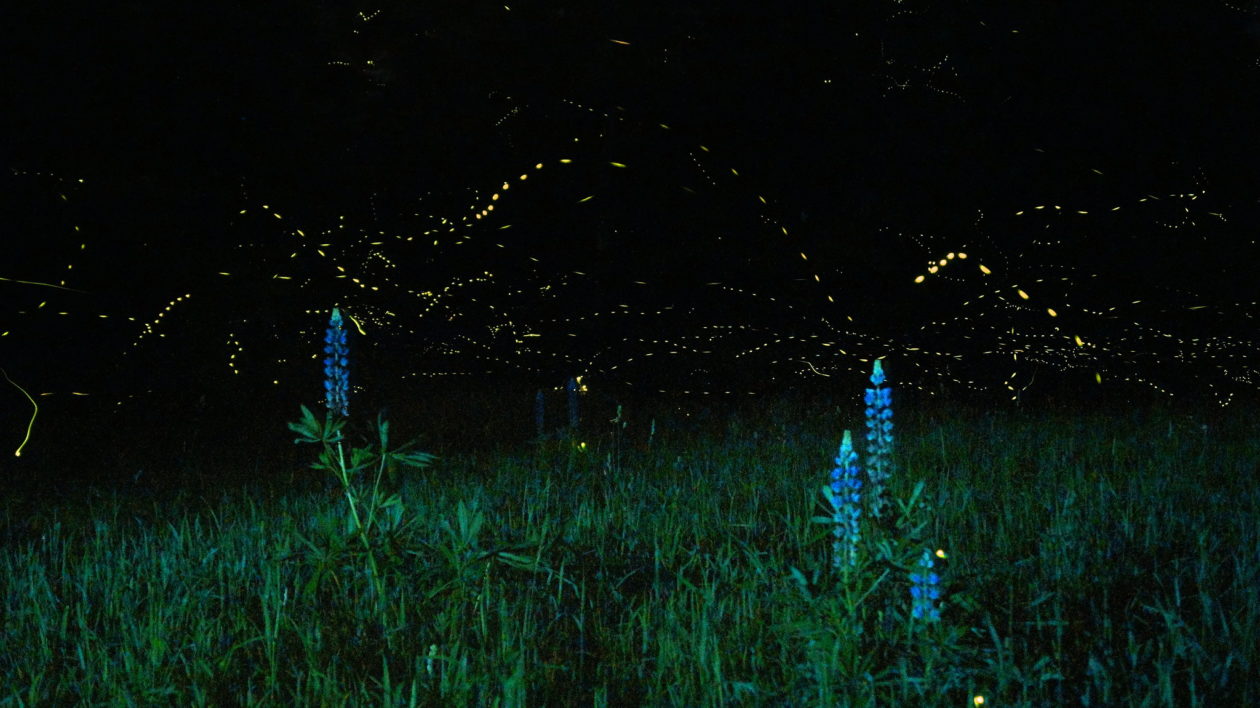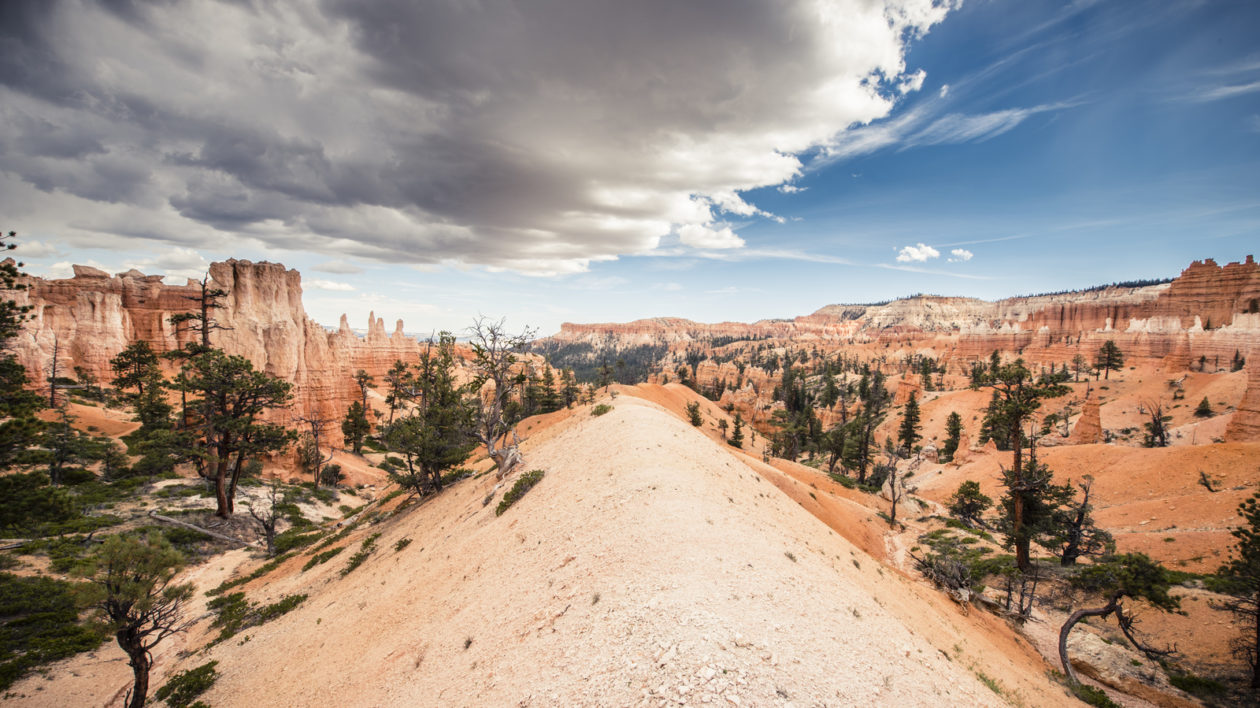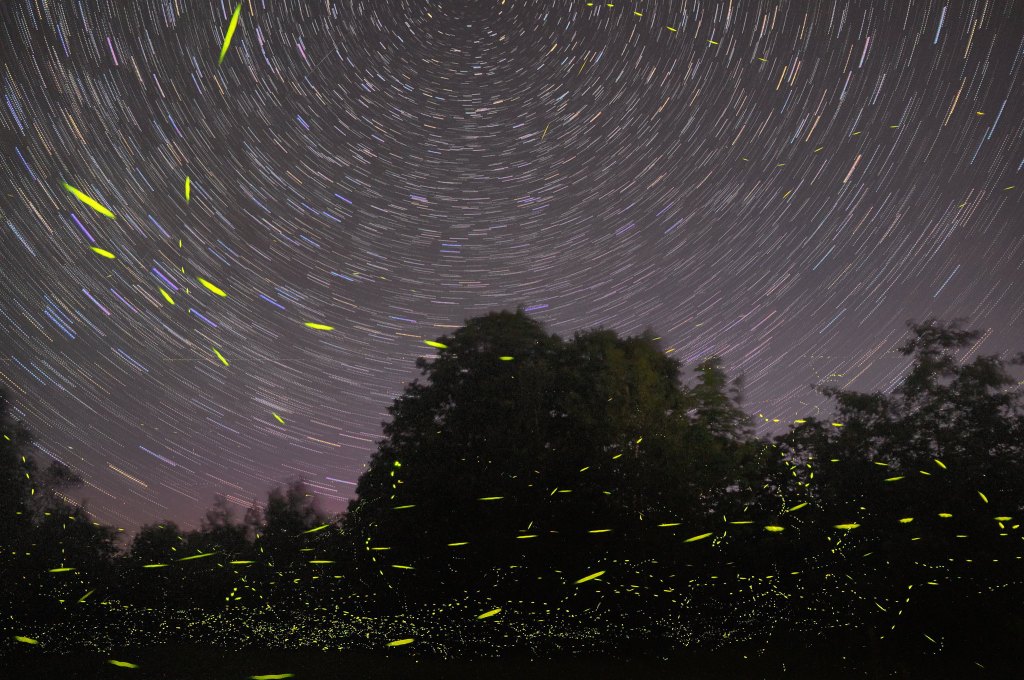I’m a youth hockey coach grounded to the couch for two months with three bone breaks in my right leg. Since I’m not going outside, I’m reading about outside. It’s Edward Abbey’s Desert Solitaire that nearly knocks me off the couch. Yes, it’s divine. The red rock country of southern Utah consumes every page of Abbey’s adventures. But it’s this little line that almost literally floors me:
“Bats flicker through the air. Fireflies sparkle by the waterseeps.”
Stop. Back up. Read again.
Fireflies? In Utah? That’s west of the Mississippi River. No way. It’s too dry. We don’t have fireflies in the West. Everyone knows that.
“People think fireflies aren’t west of the Rockies and it’s fun to change their mind,” says Christy Bills, Natural History Museum of Utah invertebrate collection manager. “It’s very hard to convince people they’re here, but they are and it’s really exciting.”

Bills’s excitement is contagious. She’s the museum’s bug expert and is using science to connect with rural communities by collecting firefly sightings from all over Utah, the second driest state in the nation. In the last four years, the Utah Firefly Project documented credible firefly sightings in 20 of Utah’s 29 counties.
“It makes people think places are worth protecting,” Bills says. “You tell people there’s a firefly here and they care a lot. They care a lot more than if it’s some other bug.”
Care is contagious too. Just look at what happens in Great Smoky Mountains National Park every spring. The Smokies are in the moist, firefly-friendly territory of North Carolina and Tennessee. There are an estimated 19 species of fireflies in the Smokies, but only one kind syncs its flashes. There’s a cluster of synchronous fireflies near Elkmont, the largest and busiest campground in the park. The natural light phenomenon is so popular crowd control is a problem.
Male fireflies glow in the air. Females are on the ground. Too many human feet trampling the forest floor kills bugs and their show. Visitors can’t wander off the Little River Trail anymore and in 2016 the park implemented a lottery to limit the crowd on that trail. Several thousand people put in when the lottery opens in April, but only 1,800 vehicles carrying up to seven people each are allowed for Mother Nature’s light show running eight days in late May or early June.

“You get 1,000 people out there in the woods at one time and you think it would be noisy but when the flashing starts, it’s quiet,” says Becky Nichols, Great Smoky Mountains National Park entomologist. “People are amazed by what they’re seeing. They’re grateful to be witnessing it.”
The National Park Service handles crowds in southern Utah’s Arches National Park too, but Arches is far from warranting a lottery for fireflies. Park superintendent Kate Cannon says she’s never seen a firefly in the area. When I tell her Abbey has, she’s surprised and intrigued.
Abbey describes fireflies as sparkling and apparently appear when bats are around. He mentions bats swooping down to eat fireflies while he’s lying on his back at night.
Some fireflies don’t light up, but the Utah project only catalogs fireflies that do. There are 325 glowing firefly sightings on file so far with specimens collected from 18 of those sites. Citizens reporting sightings don’t collect bugs. Scientists do that part and they only have five weeks to do that during mating season so collecting statewide is a scramble.

“It’s kind of amazing that we went from knowing three or four firefly locations in Utah four years ago to knowing hundreds of locations now,” Bills says. “No way that could happen without the public participating. That’s the beauty of citizen science.”
Fireflies lighting up around Moab, Utah, Abbey’s closest brush with civilization when he worked in Arches, are bigger than the fireflies in the rest of the state. They’re stronger fliers too. While Abbey put them on reader radar, the real hotspot for fireflies in the Beehive State is farther north, closer to Provo.
“There’s so many in Utah County, I can’t believe it’s not called Firefly County,” Bills says. “This is an explosion of knowledge over what we had.”
Sightings in the nation’s second driest state are so significant, Bills is going bigger. The Utah Firefly Project is turning into the Western Firefly Project in 2019. There’s already a pin on the project’s map in Nevada, the nation’s driest state. There’s also a sighting marked in Colorado and the rest of the West could light up when the bugs light up in late May. Just like in the East, fireflies in the West will float and glow this summer. It’s possible they always have but no one, other than Abbey, noticed.




So where are there fireflies in Nevada?
When my youngest was about 18 months old, we attended a family wedding in Neola, UT. We slept in a trailer and after we turned out the lights I saw a light flash and move over the bed. As I am from California, I had never seen a firefly. I saw it only a few times before I drifted off. This is our first year in Indiana, and with Summer being upon us, I find myself just as excited and mesmerized by them as I was with that one in a trailer 33 years ago.
I am so surprised that Fireflys are this far west. I also didn’t know that they are different verities.
I was born in Ohio. I definitely remember Firefly’s.
Now I live in Southern California East of Palm Springs, CA.
Is there a chance that Firefly’s will come to Southern California this Summer?
Like Linda Smith, I’ve seen fireflies in Arizona as well! But in the Las Cienegas creek area.
I’ve read that you need to leave your leaf litter on the ground in a few places to get fireflies to breed in your yard.
Great excuse not to rake.
I have sighted and photographed fireflies in Victor, ID the night of June 25, 2019.
Great information. I remember Firefly’s in Cleveland when I was young but, I have not seen them since. Now I live in Southern California. It would be amazing if I saw Firefly’s here in Palm Desert!
Are glow worms of interest? I was very surprised to see them at a place in Sanpete County, Utah.
This is wonderful news! I am originally from St. Louis, Missouri and grew up around fireflies. Now I am in Oregon and went hiking in Utah’s national parks three years ago. When I go to Utah again, I will look for fireflies. I miss seeing them.
Is there a chance that they may be in Oregon?
Did you hear about he firefly that backed into a fan?
He was delighted!!!
If anyone sees them in the Western U.S., the Natural History Museum of Utah (and partners) would love to have information about your sightings! You can report them here: http://www.nhmu.utah.edu/fireflies Thank you!
I have seen them in lower Oak Creek Canyon in Arizona in the summer. Not as prevalent as in the East though.